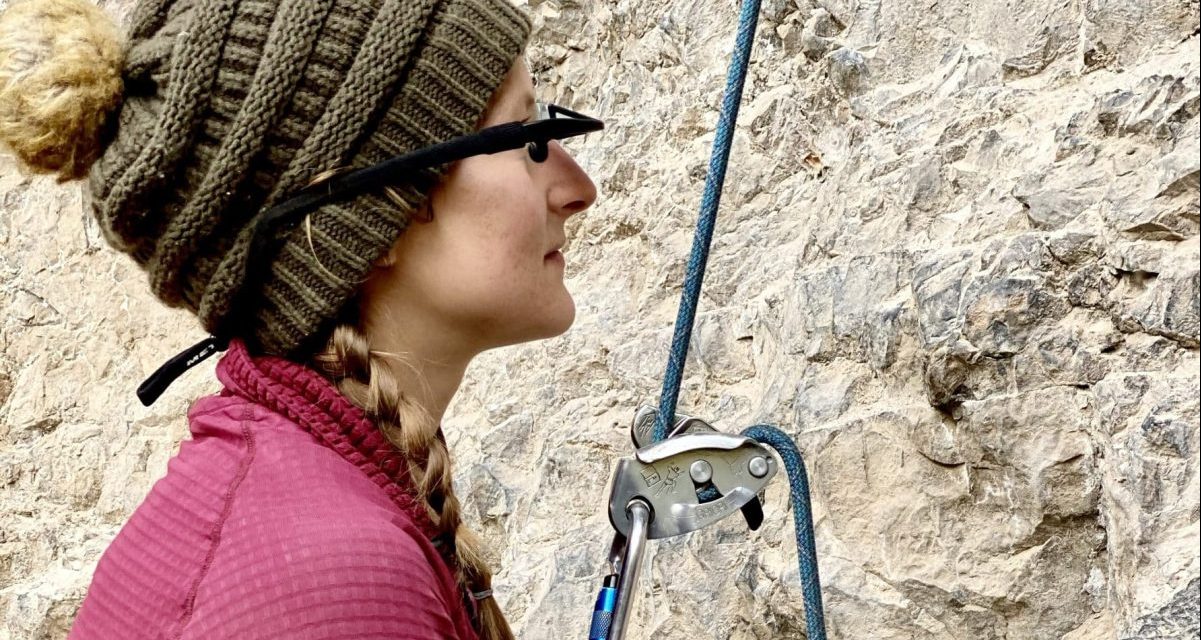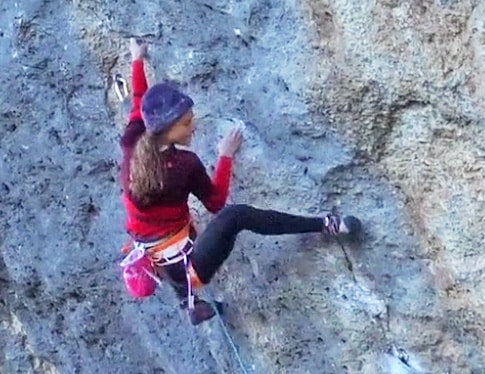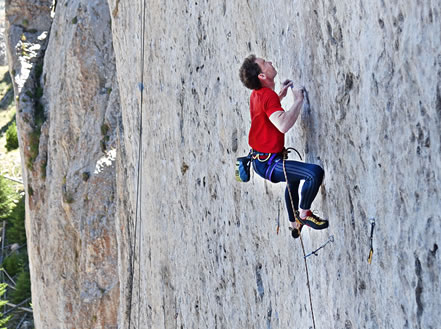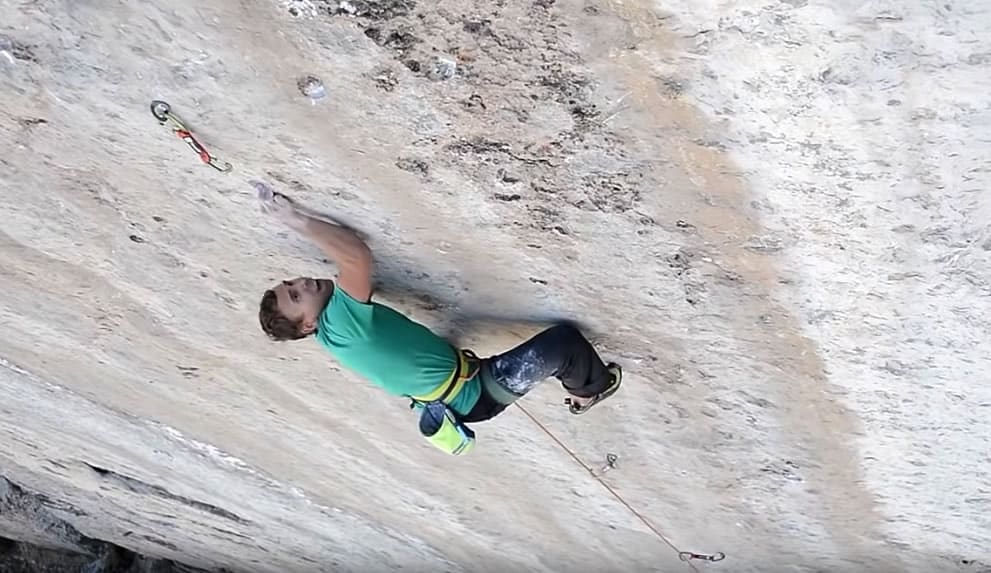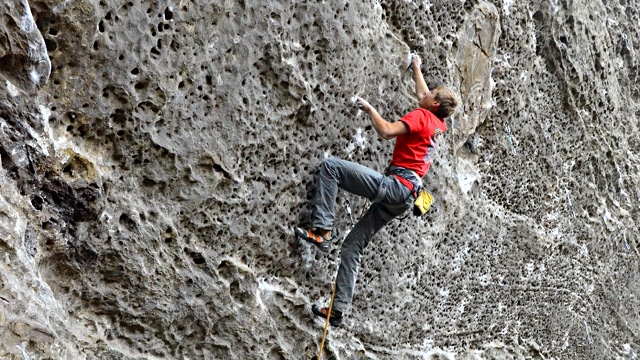Climbing your best begins with trust—in yourself and in your belay partner. There’s nothing like a strong “belaytionship” to induce confidence on the sharp end. Treat your belay partner with the respect they deserve, and give it right back to them in kind. It’ll pay off in your progress on the rock.
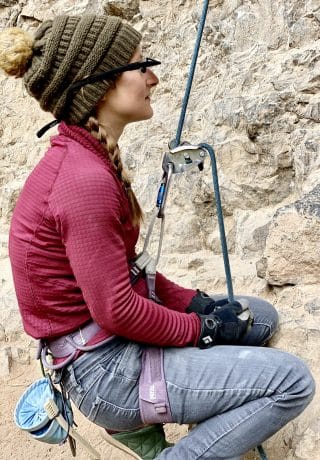
A good belayer is patient, supportive, and reliable. Be there to give your partner the boost of confidence they need to give it their all.
Climbing may seem like an individual sport on the surface. In reality, though, it’s tough—if not impossible—to achieve your goals on the wall without a sound support system down on the ground.
That’s especially true when it comes to sport and trad climbing. While spotters are nice on the boulders, a few extra pads usually do the trick in a pinch. But that rope won’t belay itself. Your belay partner is just as essential as any piece of gear.
Sure, you could ask any random stranger at the crag to give you a quick catch. I’ve done it on the rare occasion that I found myself partnerless and desperate for pitches. But belayers do more than just ensure that you make it to the chains and back in one piece. They also play a big part in your comfort and confidence as a climber. Trust in your belayer translates to courage in trying moves at (or beyond) your limit. And if you’re anything like me, climbing brings out a boatload of emotions that change by the second: fear, doubt, excitement, agitation, pride, and everything in between. Your belayer bears the brunt of that whirlwind.
For these reasons, belaying is more than a trade-off for climb time. It’s a sacred duty. Both sides have a responsibility to establish the kind of relationship that allows a climber to find out what they’re truly capable of on the sharp end. A good ol’ heart-to-heart about needs, temperaments, and expectations help each member of a belaytionship support the other best. And in the case that you do go on the hunt for random belays, abbreviated versions of those discussions become even more important since you’re starting from zero. It’s better to sacrifice a few minutes of climbing to lay the groundwork than be left wondering what kind of catch you’ll get when you’re already flying through the air.
We’ve all heard (or been part of) some pretty gnarly arguments between climbing partners at the base of the cliff. At best, such conflict will put a damper on your crag day. At worst, you’ll wind up physically hurt or emotionally scarred. Clear communication from the onset can go a long way towards keeping both parties safe and satisfied.
Here are a few key points to cover with your belayer before the next time you tie in. Whether you’ve been climbing together for decades already or just met that morning, these considerations will make your belaytionship stronger than ever.
Safety Checks
Anyone who’s ever taken a climbing gym belay test knows how to perform a thorough safety check. But just because you know how doesn’t mean you actually do it—especially at the crag without the watchful eyes of gym staff to hold you accountable.
It’s time to make safety checks cool again. It’s all too easy to miss your own mistakes; even Lynn Hill forgot to finish her figure-eight once, and barely lived to tell the tale.
Ask your belay partner to cover your tracks. Plan out what, when, and how you’ll check each other’s work before every pitch. Not only will you avoid the repercussions of careless errors, you’ll be able to go forth more confidently armed with the knowledge that your gear is good to go.

Give your climbing partner your full attention at the belay from start to finish.
Lingo
Every relationship has its own language. The same goes for belaytionships. You don’t have to use the same canned phrases every new climber learns in their first intro class, but you do need to be on the same page. Making up your own lingo can bring the two of you closer by putting a personal touch on your belaytionship. Just be sure to go over your preferred vocabulary first.
Know what your partner means by throwing a thumbs up at the top of the wall, and what you’ll say when you need tension or slack in the rope. Share how you’ll ask to be lowered or jug back up after a fall. It’s hard enough to hear each other the higher up you go; don’t make it more difficult by not understanding each other in the first place.
Weight Differences
It’s enlightening to climb with people of various statures. A 5’1” female will approach the same climb quite differently than her 6’2” male partner. Observing those differences can unlock new understandings about a climb that our own experiences blind us from. But with discrepancies between partners comes the challenge of managing weight distribution on either end of the rope.
Belaying someone smaller than you requires making the concerted effort to jump at just the right time so that there’s enough slack in the rope to catch them softly. On the other hand, belaying someone larger means sinking down into the ground as they fall so there’s not too much slack in the system.
Take stock of the physical gap between you and your partner. Agree on what you each need to do in order to provide a comfortable catch for one another. Even if it’s not perfect every time, you’ll know that they’re taking your unique tie to gravity into account.
Danger Zones
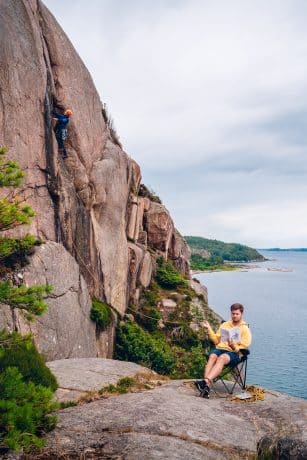
A great example of what NOT to do as a belayer!
No two routes are the same. That’s the beauty of climbing: you get an unparalleled experience every time you rope up on a new route.
It also means that each route demands different belay tactics. Even if you know your project like the back of your hand, don’t expect your partner to immediately pick up on all its quirks. Explain your needs as far as the particular route goes. Point out the cruxes, places you expect to struggle, and areas that could pose a threat to your safety. That way, you can be sure that your belayer will devote extra attention to rope management in those places—so you can focus on climbing strong through them.
Emotional Support
Trying hard often strips climbers of their internal filters. Without proper warning, your belayer might not know what to do with the shower of emotions that comes raining down on them as you battle through the crux. We’re not all angels up there, and that’s ok. Give your belayer a head’s up on how you tend to behave when the going gets tough. Clue them in on all the ugly stuff that goes through your head and might slip out of your mouth. A few wobblers here and there are to be expected. When they know what’s coming, your climbing partner can take them in stride.
At the same time, don’t treat this as a license to be a total jerk. Refrain from taking all your climbing frustrations out on your partner. Briefing them on your wobblers ahead of time is a step in the right direction; improving your own attitude is a leap. Do the inner work required to show respect to your belayer. It’s for your own good, too. There’s nothing like a smile on your face to fuel your best climbing efforts and motivate your partner to give you an all-star belay.
Related Articles:
- The Power of Pre-Climb Rituals: Preparing for Peak Performance
- Slowing the Pump Clock: 5 Strategies to Improve Your Climbing Endurance
- 6 Concentration Drill to Improve Your Climbing Focus
- 5 Strategies to Sharpen Your Concentration and Climb Better
- Hydration Tips for Hot Crag Days
Copyright © 2000–2023 Lucie Hanes & Eric J. Hörst | All Rights Reserved.

